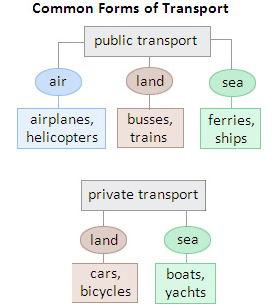Concept mapping is a learning strategy designed to help students understand connections and relationships between ideas. Concept maps were first developed by Professor Joseph Novak, at Cornell University in the 1970s as a method of helping students see the relationships between concepts. See two examples of concept maps below. For more about how and why this strategy can help you study more effectively, go to: http://en.wikipedia.org/wiki/Concept_map. The previous exercise, Exercise 5, is a good example of a strategy that can help you think more creatively.
Read this paragraph and answer the question below.
How Can Concept Maps Help Students Learn? In order to remember new information about a concept, students have to understand how the parts of a concept fit together. Concept maps can help students “;see”; how different ideas related to a concept form a larger, integrated whole. Students can use these maps to divide material they are learning into different parts that work together to form the “;big picture”;, instead of being left with a lot of “;small pieces, loosely joined”;. Concept map strategies can also improve meaningful learning by helping students to see how new concepts they are learning are related to what they already know.
What is the main message of this text? Choose the 3 correct answers.





